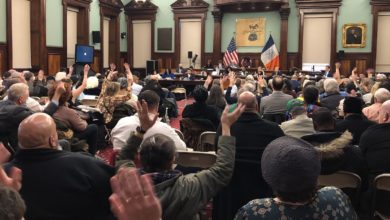The article is a special report to PSLweb.org from South Dakota.
The Pine Ridge Native American Reservation in South Dakota is as big as the state of Connecticut. It is one of the poorest areas in the Western Hemisphere. Unemployment is around 85 percent and the average family income is $4,000 a year.
The reservation is home to 28,000 Lakota Sioux.
Each person on the reservation receives a paltry $2,000 a year in
|
And now Pine Ridge residents may be deprived of something else they should rightfully have.
In February, T. Denny Sanford donated $400 million dollars to Sioux Valley Hospitals (now Sanford Health) in order to build centers for pediatric care in areas with little or no services in South Dakota. Sanford is a billionaire banker.
A number of communities, including Pine Ridge, have expressed interest. So far, 80 have applied. The need is great in each area, but nowhere is it greater than on the reservation.
In the late 1800s, the U.S. government signed treaties with the Sioux nation pledging that the federal government would fund medical treatment on reservations. But like many other treaties, the government has broken its word. The Indian Health Service, especially on the Pine Ridge Reservation, is inadequately funded and greatly understaffed.
On the reservation, the infant mortality rate is the highest on this continent. It is 300 percent higher than the U.S. national average. The tuberculosis rate is 800 percent higher than the national average.
The weight of hundreds of years of state-sponsored genocide, ethnic cleansing and national oppression still weigh heavily on the Native populations in the United States. This is felt most heavily on reservations like Pine Ridge, where just over 30 years ago the U.S. government brutally repressed a thriving national liberation movement led by the American Indian Movement.
Sanford Health is ignoring the reality facing Native peoples as it chooses future pediatric- care clinic locations. They have “more important” things in mind. Sanford Health officials have said that, while the clinics are not meant to be “cash cows,” they must be financially self-sustaining. (Sioux Falls Argus Leader, June 24)
David Link, Sanford Health’s vice president of development and research, has said there are no plans to open a reservation clinic at this time.
In reality, the new clinics are meant to secure Sanford’s hold on the medical market in the state and to bolster the corporation’s profits. The medical corporation has started an advertising war with Avera, Sanford Health’s major competitor in South Dakota. A drive around Sioux Falls reveals expensive Sanford Health billboards everywhere one looks.
Sanford Health has been moving into South Dakota towns like Mitchell and Aberdeen where Avera is already located—an attempt to smash the competition. Helping those in need is secondary to staying number one in the capitalist health market.
More health clinics are badly needed in the United States, especially in rural areas and places like the Pine Ridge Reservation. Billions of dollars are needed for the working class and oppressed to have adequate health care.
In addition, Native Americans in Pine Ridge and all over the country deserve massive reparations and control over the conditions under which they live. This includes, first and foremost, modern health clinics and hospitals.
Any clinic or health service that the people can win or establish will be helpful, but the biggest impediments to greater health care are the big hospital chains like Sanford Health, the insurance companies and the drug companies—products of the capitalist system.







